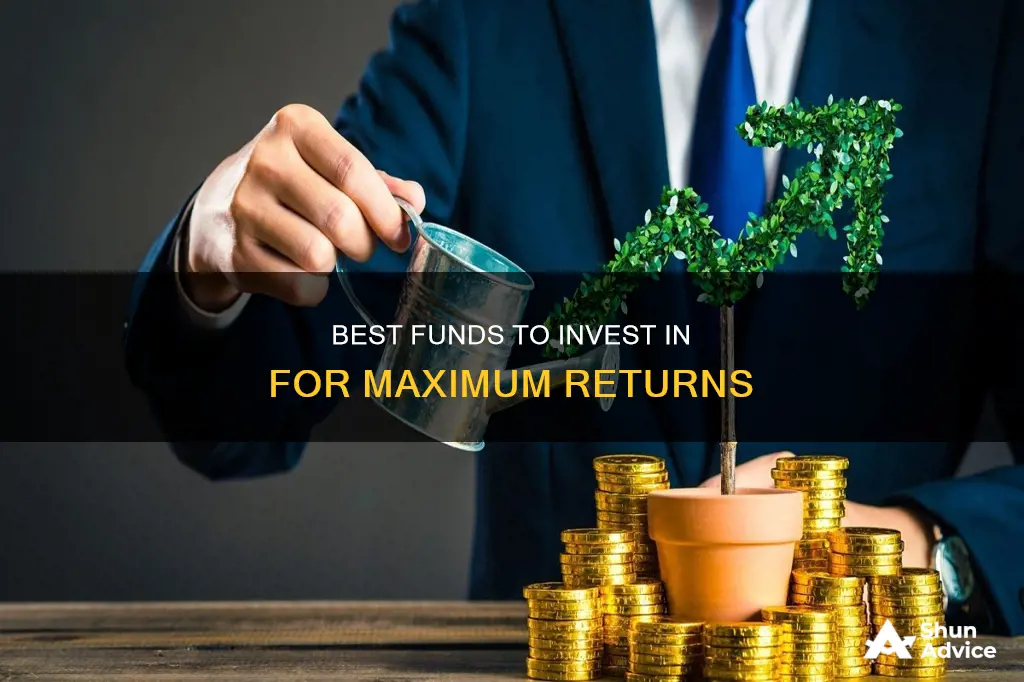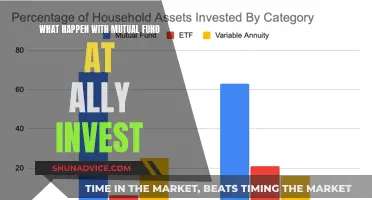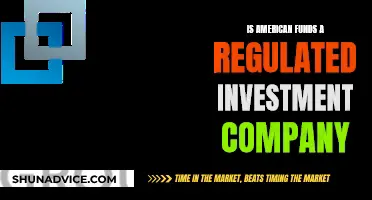
With so many funds to choose from, it can be difficult to know which ones to invest in. Funds are collective investments, where your money is pooled with that of other investors and spread across a wide range of underlying investments, helping to spread overall risk. The main types of investment funds are unit trusts and open-ended investment companies (OEICs), and investment trusts. When deciding which funds to invest in, it's important to consider your investment goals, risk tolerance, and time horizon. Different funds specialise in different sectors, so you can choose funds that align with your interests and goals. For example, if you're interested in the tech sector, you might consider investing in a tech fund. It's also important to remember that fund performance is just one factor to consider when making investment decisions, and that past performance does not guarantee future results. Diversification and a long-term investment horizon are key to successful investing.
What You'll Learn

Investment funds vs investment trusts
Investment funds and investment trusts are both collective or pooled investment vehicles. They both use a fund manager to decide which companies to buy with investors' money. However, there are some key differences between the two.
Investment Funds
Investment funds are also known as open-ended investment companies (OEICs) or unit trusts in the UK. They are open-ended, meaning that when new investors come on board, new units in the fund are created, and the fund grows. Similarly, when investors want their money back, the fund shrinks as the units are cancelled.
One of the main advantages of investment funds is that they are relatively easy to buy and sell. When you buy a share in an open-ended fund, you are buying an ownership stake in a range of investments managed by a fund manager. The price per share is calculated by taking the total value of the securities owned by the fund and dividing that number by the number of fund shares. These shares are also known as net asset value (NAV).
However, this open-ended structure can cause liquidity issues. If many shareholders want to redeem their assets at once, it can force the fund manager to sell investments at a loss, negatively affecting the fund's performance.
Investment funds carry two sets of charges: an initial charge, which can be up to 5% of the investment, and annual management charges, which typically range from 0.5% to 2%.
Investment Trusts
Investment trusts, on the other hand, are closed-ended funds. They are listed companies with shares traded on the stock market. The number of shares is set, and these are bought and sold between investors. If you wish to sell your shares, you must find a buyer. This structure means that an investment trust's performance is unaffected by asset flows.
Investment trusts can be riskier than investment funds because their shares can trade at a premium or discount to the value of the assets they hold (net asset value). For example, if a trust is unpopular, its share price may fall below the total value of its holdings.
Investment trusts tend to have lower costs than investment funds, with no initial charge and lower annual fees. However, buying and selling incurs share-dealing charges.
Investment trusts can also borrow money or 'gear' to enhance returns in a rising market, whereas investment funds cannot.
Both investment funds and investment trusts have their advantages and disadvantages. Investment funds offer more liquidity and are easier to buy and sell, but they may carry higher fees and are susceptible to liquidity issues. Investment trusts, on the other hand, are closed-ended and unaffected by asset flows, but their shares can trade at a premium or discount to the net asset value, adding volatility.
When deciding between the two, it is essential to consider your investment goals, risk tolerance, and the level of control you want over your investments.
Launching an Investment Fund: A Comprehensive Guide
You may want to see also

Active vs passive funds
There are two main types of investment funds: active funds and passive funds. Both have their own advantages and disadvantages, and investors often debate the merits of both.
Active Funds
Active funds are those where the portfolio manager actively selects investments based on their independent assessment of their worth. Active managers aim to "beat the market" and outperform certain benchmarks. For example, an active US equity investor may aim to achieve better returns than the S&P 500 or Russell 3000. Active investing requires a hands-on approach and involves buying and selling investments based on their short-term performance. It takes a deeper analysis and expertise to know when to pivot into or out of a particular stock, bond, or asset. Active investing also requires analyzing an investment for price changes and returns, and familiarity with fundamental analysis, such as analyzing company financial statements. Active investing has a prominent place in the market, and active mutual fund managers consistently underperform their benchmark index. Active investing is generally more expensive due to the need to pay research analysts and portfolio managers, as well as additional costs due to more frequent trading.
Passive Funds
Passive funds, on the other hand, aim to match the performance of certain market indexes rather than trying to outperform them. Passive investors rarely buy individual investments, preferring to hold an investment over a long period or purchase shares of a mutual or exchange-traded fund. Passive investors tend to rely on fund managers to ensure the investments held in the funds are performing well and expect them to replace declining holdings. Passive investing involves less buying and selling, making it a very cost-effective way to invest. Passive funds simply follow the index they use as their benchmark, resulting in ultra-low fees. Passive investing has garnered more investment flows than active investments, and historically, passive investments have earned more money than active investments.
Active vs Passive: Which is Better?
There is no one-size-fits-all answer to whether active or passive investing is better. Both strategies have their strengths and weaknesses, and the best strategy may be a blend of both. Passive investing works best for most investors, but active investing can benefit investors more in certain climates, such as a volatile market or a weakening economy. Passive investing may be better when specific securities within the market are moving in unison or when equity valuations are more uniform. Additionally, passive funds have attracted more inflows than active funds for the past nine years. However, active funds have higher long-term success rates in certain categories, such as real estate, bond, and small-cap equity funds.
In conclusion, the choice between active and passive funds depends on various factors, including investment goals, risk tolerance, and market conditions. Active funds offer more flexibility and the potential for higher returns but come with higher fees and risks. On the other hand, passive funds are more cost-effective and have historically performed better, but they may be too limited and offer smaller returns. Ultimately, many professionals blend these strategies to take advantage of the strengths of both.
Bond Funds vs Money Market Funds: Where Should You Invest?
You may want to see also

Diversifying your portfolio
Invest in Different Asset Types
Diversification can be achieved by investing in different asset types, such as shares, bonds, property, cash, commodities, and even other funds. Multi-asset funds, for example, provide exposure to a mix of these asset classes. This not only helps to diversify your portfolio but also gives you access to a wide range of markets and countries.
Choose Funds with Different Specialisations
Different funds specialise in different sectors. For instance, if you're interested in the European market, consider investing in a fund that focuses primarily on Europe. By investing in funds with different geographical or sectoral specialisations, you can further diversify your portfolio.
Mix Active and Passive Funds
Active funds have fund managers who actively choose investments to try and outperform a benchmark, while passive funds, or tracker funds, aim to closely follow a specific index. By combining both types of funds, you can benefit from the potential outperformance of active funds while also ensuring broad market exposure through passive funds.
Invest in a Variety of Fund Types
There are different types of funds, such as unit trusts, open-ended investment companies (OEICs), and investment trusts. These fund types differ in their structure, how they are bought and sold, and whether they are open-ended or closed-ended. By investing in a mix of these fund types, you can add another layer of diversification to your portfolio.
Consider Different Risk Profiles
Funds have varying risk profiles depending on their investment strategies and the markets they focus on. For example, an emerging market fund investing in Chinese equities is typically considered riskier than a fund investing in established UK blue-chip stocks. By allocating your investments across funds with different risk profiles, you can manage your overall portfolio risk.
Long-Term Investment Horizon
Diversification is most effective when combined with a long-term investment horizon. Short-term volatility can obscure the benefits of diversification, so it is generally recommended to invest for at least five years to ride out short-term market fluctuations and increase the potential for greater returns.
Smart Mutual Fund Investing: Strategies for Success
You may want to see also

Choosing a fund manager
When choosing a fund manager, it's important to remember that past performance does not guarantee future results. With that in mind, here are some factors to consider:
Team vs. Star Manager
Funds can be run by a single star manager or a team. Star managers are often associated with an X factor—an extraordinary ability when it comes to stock picking and market timing, whether instinctive or as a product of experience. However, the performance of a fund managed by a star manager may suffer if they leave, leaving investors in a difficult position. On the other hand, a team-run fund may be more stable, but it may lack the X factor that a star manager can bring.
Track Record
Assessing a manager's track record is essential. Look at both cumulative and discrete annual performance to understand how their style adapts to different market conditions. Compare their performance to their sector, keeping in mind that in many sectors, average performance may be worse than the market.
Investment Style
Familiarise yourself with the fund manager's investment style by reviewing reports submitted to investors or the fund's promotional literature. Some common styles include:
- Bottom-up vs. top-down: Bottom-up focuses on picking individual investments, while top-down allocates money to regions and sectors first.
- Best ideas: Indicates the fund manager may deviate substantially from the benchmark, leading to potentially better or worse performance.
- Concentration and diversification: Concentrated funds carry more risk but can also outperform, while diversified funds tend to reproduce market performance.
- Closet tracker: The manager mostly replicates the benchmark, making only minor changes. This can be seen as conning investors out of their money, as they can buy genuine index trackers for lower costs.
- GARP (Growth at a Reasonable Price): The manager looks for reasonably priced companies with growth potential, rather than investing in any growth company regardless of valuation.
Portfolio Analysis
When analysing a fund manager's portfolio, consider the following:
- Size: A smaller fund may have more flexibility to make decisions that impact performance.
- Past performance: While not indicative of future results, past performance can give you an idea of the manager's style.
- Comparison to benchmark: If the fund's holdings and sector weightings are similar to the benchmark, it suggests the manager is running a quasi-tracker.
- Number of shares: Look for a manager who takes concentrated, high-conviction positions rather than half-heartedly owning many companies.
- Portfolio turnover: A lower turnover rate suggests the manager is making high-conviction decisions and giving them time to play out. It also reduces trading costs, positively impacting performance.
Fees
Don't forget to consider the fees charged by the fund manager, as these can significantly impact long-term investment returns. While a good manager may be worth higher fees, it's essential to keep costs down where possible.
Mutual Fund Closure: Why Investors Get Shut Out
You may want to see also

Short vs long-term investments
When considering what funds to invest in, it's important to understand the difference between short-term and long-term investments.
Short-term investments
Short-term investments are typically held for less than a year, and sometimes for as little as 3-12 months. They are often high-quality, liquid assets that can be easily converted to cash. Examples include certificates of deposit (CDs), money market accounts, high-yield savings accounts, government bonds, and Treasury bills. Short-term investments are usually chosen by those who need access to their money in the near future, such as for a vacation, wedding, or home improvement. These types of investments are also used by young people who are just starting in their careers and want to build up a combination of short and long-term investments.
Long-term investments
Long-term investments, on the other hand, are held for several years, typically more than 10 years. These are chosen by people who don't need access to their money for a long time and are focused on growth. Long-term investments are often used for retirement or college savings. They can include stocks, mutual funds, and bonds. Long-term investors can potentially tolerate more risk and volatility in their portfolios, as they have more time to recover from any losses.
Choosing the right funds
When deciding which funds to invest in, it's important to consider your investment goals and risk tolerance. If you're investing for the short term, you may want to choose lower-risk investments like bonds to preserve your capital. For long-term investing, you can introduce security types with greater short-term volatility but more growth potential over time. It's also worth noting that investing for at least five years is recommended, as this gives you a better chance of riding out short-term volatility and benefiting from greater returns.
Popular funds
Some of the most popular funds currently include Vanguard LifeStrategy 80% Equity, Royal London Short Term Money Mkt Y Acc, Jupiter India I Acc, and L&G Global Technology Index.
Diversification
It's important to diversify your portfolio by investing in a range of different funds and assets. This helps to spread the risk and smooth returns over time.
Cash Funds: A Guide to Investing Wisely
You may want to see also
Frequently asked questions
Investing in funds means your money is spread across multiple assets, which helps to diversify and spread the risk. Fund managers are experts who spend time researching and picking the best opportunities in a chosen sector. Funds also bring a wide range of choice, enabling investors to control risk, access different markets and countries, and diversify across different assets.
The main types of investment funds are unit trusts, open-ended investment companies (OEICs), and investment trusts. Unit trusts and OEICs are similar because they are both 'open-ended' and have no restrictions on the number of units or shares that can be issued. However, unit trusts are governed by trust law, whereas OEICs are established as companies. Investment trusts are 'closed-ended' and have a set number of shares.
This depends on your investment goals and risk appetite. Funds can be further categorised by their specialisation in different sectors, asset types, and investment timeframe. For example, if you're interested in Europe, you could invest in a fund that focuses on Europe. Funds can also be categorised by their risk level, with equity portfolios considered the riskiest type of fund.







